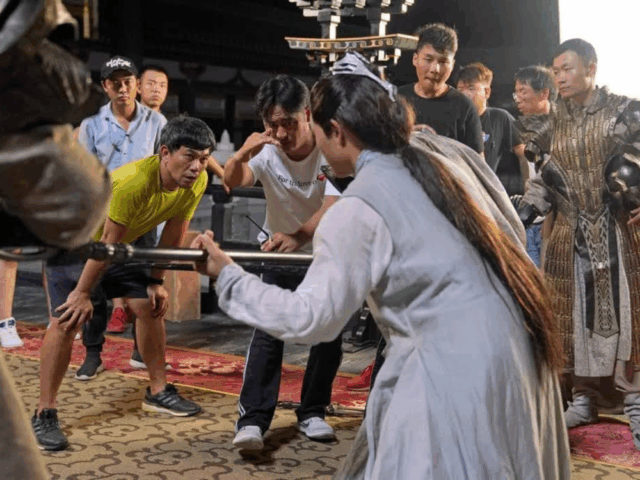KUALA LUMPUR, June 5 — While captivating storylines, cinematography, and visual effects often steal the spotlight in films, one vital aspect is frequently overlooked – the production crew.
These behind-the-scenes professionals form the backbone of the industry, driven by passion and resilience, despite facing instability, inconsistent pay, and limited protection under Malaysia’s gig-based film economy.
Unlike countries with strong union backing like the US and the UK, many Malaysian film workers operate without job security, relying on short-term gigs and informal arrangements despite the presence of industry associations.
Malay Mail spoke with an award-winning cinematographer, an assistant camera operator whose job is also called a focus puller in industry jargon, and a veteran set builder for their insight into life behind the lights and camera.
A career of highs and hardships
First assistant camera operator (first AC) Lee Qin Ling, who goes by the moniker Quinlyn (pronounced Kweenleen), has been in the film industry since 2015, starting as a second AC after briefly working as a videographer.
Her portfolio includes both local and international productions such as Ada Hantu 2, Pendekar Awang, and Kahar: Kapla High Council.
First assistant camera operator Quinlyn has been in the filming industry since 2015. — Picture courtesy of Lee Qin Ling
She said that first ACs in Malaysia typically earn between RM700 and RM900 a day, and a 25-day movie shoot could bring in RM17,000.
However, Lee stressed that such earnings aren’t consistent, as jobs can dry up for months.
“There are times where I had to go sometimes up to two months without any pay because there are no shooting jobs available at that time,” she said.
Being financially disciplined is key, especially during busy months when spending can spiral.
“I also had an experience where I’ve agreed to do a movie for 30 days and because I was attached to that project, I had to reject offers from other production houses that came in.
“Then suddenly the initial project got cancelled and I’ve lost two months’ worth of income from that cancellation alone.
“You just have to wish that other jobs are available. Usually I would look for commercial shoots and other small jobs, it is not very much in our control,” she said.
Despite the high per-job rates, she said her annual income – after taxes, deductions, and job gaps – is comparable to that of a mid-range office worker.
Even confirmed jobs come with risks.
She once worked a full month for a production company that didn’t pay her in full.
“They owe me around RM9,000 and this does not include the other 20 production crews who also didn’t get paid,” she said.
Although she’s considered leaving the industry many times, her passion for motion pictures keeps her going.
She also noted that while some production houses offer insurance and contribution to employee provident funds, such benefits are still rare.
“Getting too focused on small benefits would eventually make the job much more difficult to sustain,” she said.
From chaos to craft
Director of photography (DP) Stephen Chua, 51, recalls a very different local film industry when he began his career in 1996.
“It was bad back then – working for 15 to 16 hours straight is normal and at that time, the crews are not as cultured as now, in terms of education I mean. Most of them are like ‘gangsters’,” he said.
“They don’t have diplomas or degrees, there are also those who didn’t even finish high school where in some cases, they would drop out of school, some as young as 13 years old, to follow directors or producers for work and most of them weren’t taught about the history of arts or cinematography at all.”

After eight years of working as a cinematographer in China, Stephen Chua now has a personal mission which is to share all he knew about filmmaking with local production crews. — Picture courtesy of Stephen Chua
Now, he said, the new generation of crew are more educated, with many holding diplomas.
“I love the culture now where everyone kind of has the same understanding,” the veteran cinematographer said.
Chua, who won Best Cinematographer at the 32nd Malaysia Film Festival for Small Town Heroes, the 2022 film directed by Ryon Lee, spent eight years working on period TV dramas in China.
He said that in China, filming operations for TV shows are often the same as for movies with big budgets, large crews, and professional actors trained in the performing arts.
“If the talents don’t like the DP, they can straight away tell the producers and the producers would replace the DP just like that,” he said.
He added that cinematographers must not only frame beautiful shots but also collaborate with directors and actors to enhance performance and storytelling.
Building worlds from the ground up
WE Productions Sdn Bhd, formerly Wong Enterprise, has been building sets in Malaysia since 1988.
The company’s resume includes work on major productions like Crazy Rich Asians, Blackhat, and Netflix’s The Ghost Bride and Marco Polo.
Founder Michael Wong Fock Kam said the company’s mission is to deliver safe, timely, and visually stunning sets using materials like timber, fibreglass, and polystyrene – most of which are sourced locally.
“Set building is very much a collaborative and carefully planned process. We always prioritise two things: safety and timely delivery,” he said.
WE Productions’ biggest movie set was a nuclear station for Blackhat, the 2015 US thriller directed by Michael Mann starring Chris Hemsworth, which took five months to prepare.
The TV set that took the longest was for Marco Polo, with each season requiring eight months of work over a two-year span.
Wong said their biggest challenge today is meeting global production standards within Malaysia’s tighter budgets and limited access to specialised materials.
“Today, the landscape has shifted.
“With the rise of digital-first content and social media platforms, there’s a much stronger emphasis on speed and volume over craftsmanship,” Wong said.
“Producers want things done faster and cheaper, and that often puts pressure on departments like set building, where quality really does take time and resources.”

WE Productions built a set for a Chinese series titled ‘Contenders’ at the Iskandar Malaysia Studio in Johor. — Picture courtesy of WE Productions.
He also criticised local productions that cut corners due to budget constraints, which often compromises quality.
Although the industry is recovering post-Covid, Wong said job numbers are still far from pre-pandemic levels.
He urged the government to streamline work permit approvals for international productions through the Central Agency for Application for Filming and Performance by Foreign Artistes (Puspal) to avoid losing jobs to other countries.
“We’re talking about three big jobs that were lost to Bangkok, Thailand,” he said.
According to Wong, those international production houses came to Malaysia first and they liked the locations here, but the approval process took over a month.
“So, instead, they went to Bangkok where they would only need one week to get their work permits approved,” he added.











